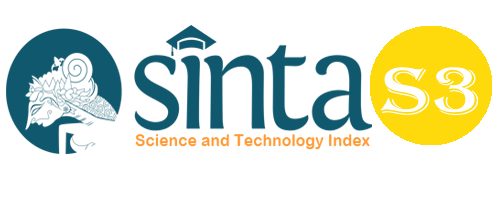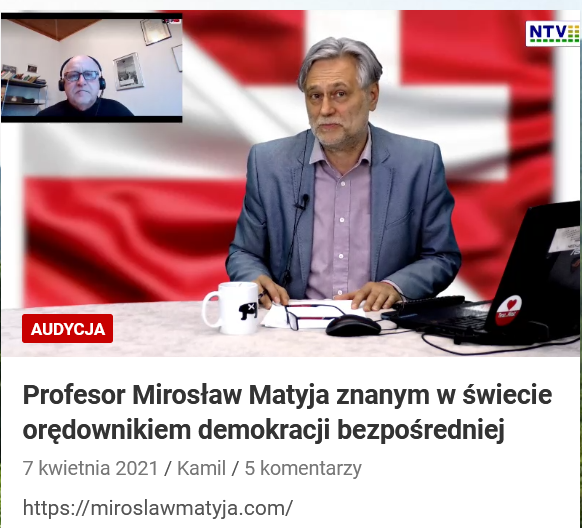Technology-Based Integration to Develop Students’ Narrative Text
Abstract
Improving students' skills in writing English is considered challenging for non-native students because of their lack of knowledge in building ideas, vocabularies, and the organization of the text. Therefore, this article aims to analyze and describe whether technology-based integration can develop students’ narrative writing. The method used to analyze the text was an experimental approach with sixty students taking Writing II subject at Nommensen University Pematangsiantar, Indonesia. Thirty students involved in the experimental group were provided with the technology-based environment (HyperStudio), while the other thirty students in the control group were not. The results of the study showed there was a significant improvement in the students’ narrative writing in the experimental group. The results of the study are expected to give great insights and knowledge for creative pedagogy in the classroom. However, the researcher suggests that future studies use a larger sample with a diverse range of learning styles, age groupings, and gender. In addition, future researchers should also look into the benefits of using HyperStudio across the curriculum in Indonesia, including science, social studies, history, geography, and other subjects.
Keywords
Full Text:
PDFReferences
Amaechi, U. (2016). Invasive technologies: How administrators, teachers and students negotiate the use of students' mobile technologies in the classroom. Harvard Graduate School of Education. DOI: http://nrs.harvard.edu/urn3:HUL.InsRepos:27112697
Ariyanti. (2016). The teaching of EFL writing in Indonesia. Dinamika Ilmu, vol. 16, no. 2, pp.1-15.
Barus, L. D. G., Herman., and Niswa, K. (2020). The Effect of Student Teams Achievement Divisions (STAD) to the Students’ Writing Ability on Recount Text. Journal of English Education and Teaching (JEET), Volume 4 number 4, December 2020, Page 536-547. DOI: https://doi.org/10.33369/jeet.4.4.536-547
Bell, D. L., Loader, B. D., Pleace, N. and Schuler, D. (2004). Cyberculture: The key concepts. London & New York: Routledge.
Bouziane, A. (2005). HyperStudio 4.5. Teaching English as a second or foreign language, Vol. 9, no.1, pp. 1-15. http://tesl-ej.org/ej33/m2.pdf
Burgstaller, S. A. and Cristol, D. A. (2000). HyperStudio for grade-one students, computers in the schools. Interdisciplinary Journal of Practice, Theory & Applied Research, vol. 16, no. 3-4, pp. 227-236. DOI: http://dx.doi.org/10.1300/J025v16n03_10
Cahyono, B. Y. And Mutiaraningrum, I. (2016). Indonesian EFL teachers’ familiarity with an opinion on the Internet-based teaching of writing. English Language Teaching, vol. 9, no. 1, pp. 199-208.
Chao-Jung, K., Thang, S. M., and Ou, S. C. (2014). Investigating the ICT use and needs of ‘Digital Natives’ in learning English at a Taiwanese University. International Journal of Web-Based Learning and Teaching Technologies, vol. 9, no. 2, pp. 32-45.
Cuban, L. (1986). Teachers and machines: the classroom use of technology since 1920. New York & London, Teachers College, Columbia University.
Effendi, L. and Wirabhakti, A. (2015). Visiting EFL class: The use of sentence-soup game in writing class. ELT Perspective, vol. 3, no. 2.
Geiser, S. and Studley, R. (2001). UC and the SAT: Predictive validity and differential impact of the SAT I and SAT II at the University of California. Retrieved from: http://www.ucop.edu/sas/research/researchhandplanning/pdf/sat_study.pdf
Ghahri, F., Hashamdar, M., and Mohmadi, Z. (2015). Technology: A better teacher in writing skill. Theory and Practice in Language Studies, vol. 5, no.7, pp. 1495 – 1550. DOI: http://dx.doi.org/10.17507/tpls.0507.24
Harmer, J. (2001). The practice of English language teaching (3Ed.). Retrieved from: https://www.academis.edu/5665956/ThePracticeofEnglishLanguageTeachingJeremyHarmer
Hatmanto, E. D. (2012). The use of Problem-Based learning in the writing class in Indonesia: A case study at English Education Department. Yogyakarta: Universitas Muhammadiyah, Yogyakarta.
Haviland, V. S. and McCall, M. J. (1999). Transformation through technology: How HyperStudio updated middle school research. The English Journal, vol. 89, no. 1, pp. 63-68. Retrieved from: http://www.jstor.org/stable/821358
Herman., Purba, R., Thao, N. V., & Purba, A. (2020). Using Genre-based Approach to Overcome Students’ Difficulties in Writing. Journal of Education and E-Learning Research, 7(4), 464-470. https://doi.org/10.20448/journal.509.2020.74.464.470
Hidayati, K. H. (2018). Teaching writing to EFL learners: An investigation of challenges confronted by Indonesian teachers. Langkawi Journal, vol. 4, no. 1, pp. 21-31. DOI: http://dx.doi.org/10.31332/lkw.v4i1.772
Hubbard, P. (2013). Making a case for learner training in technology enhanced language learning environments. CALICO Journal, vol. 30, no. 2, pp. 163 – 178.
Jung, S. H. (2006). The use of ICT in learning English as an international language. University of Maryland, Maryland, College Park, United States. Retrieved from: http://search.proquest.com/docview/305302616?accountid=10499
Kean, A. C., Embi, M. A., and Yunus, M. M. (2012). Incorporating ICT tools in an active engagement strategy-based classroom to promote learning awareness and self-monitoring. International Education Studies, vol. 5, no. 4, pp. 139-149.
Klimova, B. F. and Semradova, I. (2012). The teaching of foreign languages and ICT,” Procedia Technology, vol. 1, no. 0, pp. 89-93. DOI: http://dx.doi.org/10.1016/j.protcy.2012.02.017
Knipper, K. and Duggan, T. (2006). Writing to learn across the curriculum: Tools for comprehension in content area classes. The Reading Teacher, vol. 59, no. 5, pp. 462-470. Retrieved from: http://www.jstor.org.ezproxy.tntech.edu/stable/20204374?seq=1#pagescantabcontents
Komara, U. and Ramdani, M. J. (2016). Motivating students through EDMODO (a blended learning in grammar class). The 61st TEFLIN International Conference, Solo.
Kristyanawati, M.D., Suwandi, S., and Rohmadi, M. (2019). Improvement of Exposition Text Writing Motivation and Skills Through the Application of the Problem Based Learning Model. Budapest International Research and Critics in Linguistics and Education (BirLE) Journal Vol 2 (2): 278-287
Kutlu, O. (2012). Using technology for developing writing in an ESP class. Akdeniz Language Studies Conference, Procedia – Social and Behavioral Sciences, vol. 70, pp. 267-271. Retrieved from: www.sciencedirect.com
Lestari, L., A. (2008). The interactional approach to the teaching of writing and its implications for second language acquisition, TEFLIN Journal, vol. 19, no. 1.
Lu, Z., Hou, L., and Huang, X. (2010). A research on a student-centered teaching model in an ICT-based English audio-video speaking class. International Journal of Education and Development using Information and Communication Technology (IJEDICT), vol. 6, no. 3, pp. 101-123.
Machmud, K. (2011). The integration of technology in a decentralized curriculum setting: The case of English as Foreign Language (EFL) instruction in Gorontalo, Indonesia. Electronic Thesis or Dissertation. Retrieved from: https://etd.ohiolink.edu
Martin, D. (2012). Elementary Science Methods: A Constructivist Approach. California: Cengage Learning.
Megaiab, M. M. A. (2014). The English writing competence of the students of Indonesian Senior High School,” WEI International Academic Conference Proceedings, Bali.
Mukminin, et al. (2015). Voices from within: Student teachers’ experiences in English academic writing socialization at one Indonesian Teacher Training Program. Qualitative Report, Vol. 20, no. 9, pp. 1394–1407. DOI: 10.46743/2160-3715/2015.2280
Pardede, H. and Herman. (2020). The Effect of Numbered Heads Together Method to the Students’ Ability in Writing Recount Text. Cetta: Jurnal Ilmu Pendidikan, Jayapangus Press, ISSN 2615-0913 (E), Vol. 3 No. 2 (2020), PP. 291-303.
Peha, S. (2002). What is good writing?” North Carolina: Teaching that Makes Sense Inc. retrieved from: www.ttms.org
Prensky, M. (2001). Digital natives, digital immigrants part 1. On the Horizon, vol. 9, pp. 1-6. DOI: http://dx.doi.org/10.1108/10748120110424816
Rajagukguk, T. A., Herman. H., & Sihombing, P. S. R. (2020). The Effect of Using Collaborative Writing Method on Students’ ` Recount Text at Grade Ten of SMK YP 1 HKBP Pematangsiantar. Acitya: Journal of Teaching and Education, 2(2), 95-114. DOI: https://doi.org/10.30650/ajte.v2i2.1363
Raman, K. and Yamat, H. (2014). Barriers teachers face in integrating ICT during English lessons: A case study. The Malaysian Online Journal of Educational Technology, vol. 2, no. 3, pp. 11-19. Retrieved from: http://files.eric.ed.gov/fulltext/EJ1086402.pdf
Rodgers, H. (2005). Writing systems: A linguistic approach. Oxford, Blackwell Publishing
Saputro, J. D. A. (2013). Digital storytelling to improve students’ mastery in writing narrative,” Journal of English Language Teaching Forum, vol. 2, no. 1, pp. 1-8. Retrieved from: http://journal.unnes.ac.id/sju/index.php/elt
Saragih, J. Y., Adisaputera, A., and Saragi, D. (2020). The Effect of Reasoning Skills on Writing of Explanation Text Assessed from the Social Economic Status of Parents in Class VIII, SMP Negeri 2 Raya, Simalungun District, Indonesia. Budapest International Research and Critics in Linguistics and Education (BirLE) Journal Vol 2 (3): 78-87
Silalahi, D. E., Sihombing, P. S. R., Herman, and Purba, L. (2021). High Order Thinking Skill (HOTS) Questions on Learners’ Writing Ability of Report Text at EFL of FKIP Universitas HKBP Nommensen. Jurnal Dinamika Pendidikan, Vol. 14, No. 2, PP. 17-32. DOI: https://doi.org/10.51212/jdp.v14i2.33
Sims, K. C. (2000). Using HyperStudio in the classroom. Retrieved from: http://tim-brosnan.net/ITPGCE/coursematerials/softwarehelp/Hyperstudio/usinghs.pdf
Tribble, C. (1996). Language Teaching Writing. London: Oxford University.
Wagner, R. (1997). HyperStudio: Homepage for HyperStudio. Retrieved from: http://www.hyperstudio.com
Wang, F. and Reeves, T. C. (2003). Why do teachers need to use technology in their classrooms? Issues, problems, and solutions, Computers in the Schools, vol. 20, no. 4. DOI: 10.1300/J025v20n0405.
Zhao, Y. (2003). Recent developments in technology and language learning: A literature review and meta-analysis. CALICO Journal, vol. 21, no. 1, pp. 7-27.
DOI: https://doi.org/10.33258/birci.v5i1.3906
Article Metrics
Abstract view : 86 timesPDF - 29 times
Refbacks
- There are currently no refbacks.

This work is licensed under a Creative Commons Attribution-ShareAlike 4.0 International License.

This work is licensed under a Creative Commons Attribution-ShareAlike 4.0 International License.

_.gif)

















_.gif)



